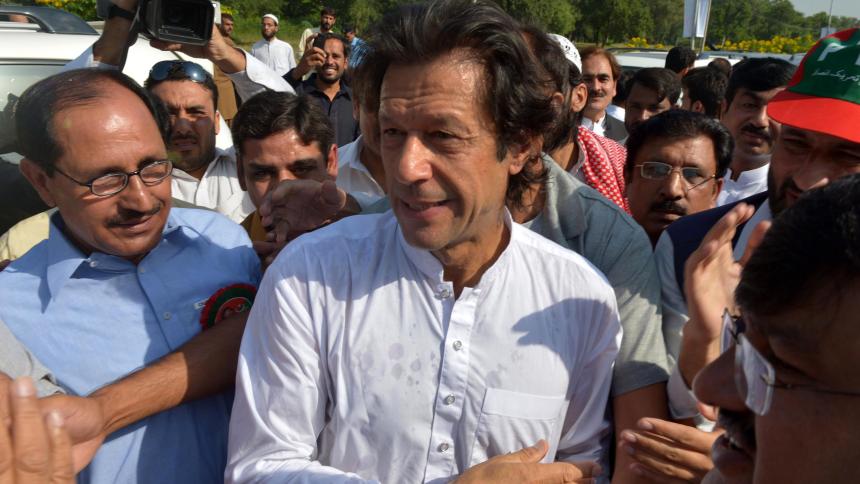The 2018 Pakistani general election took place on 25 July, after the completion of a five-year term by the outgoing government. At the national level, elections were held on 270 constituencies and each of the 270 constituencies elected one Member of the National Assembly (MNA) to the National Assembly of Pakistan.
As Pakistan announced 25 July to be the date for holding General Elections in the country, all eyes have turned to cricket star-turned-politician Imran Khan, who has expressed hope of winning the polls. The first time in the history of Pakistan elections, polling day passed off peacefully and there was a 53 per cent turnout, significantly higher than the 48 per cent in 2013. The general election in Pakistan is being described as a milestone in the democratic history of the country.

There were reports of massive pre-poll “rigging”. Like, forcing of certain party leaders to return their tickets, muzzling of the media, and misuse of the army and judiciary in favour of a particular party. It is difficult to understand how the changing loyalties of political leaders can be described as rigging. The hold of the army on institutions like the judiciary, the National Accountability Bureau, the media, etc was a common refrain.
Media were allegedly prevented from fully covering certain issues like the rights of the minorities and the role of state institutions. For the poll-day arrangements, questions were focused on the large-scale deployment of the army. Concerns were raised about the order to deploy soldiers inside the polling stations.
The candidates from across parties and independents were able to campaign freely and peacefully. The overall security situation was tense, especially in Khyber Pakhtunkhwa (KPK) and Balochistan, where terrorist attacks in the preceding weeks claimed more than 170 lives, including three candidates. A lot of negative and abusive campaigning was initially reported but after the Election Commission of Pakistan’s (ECP) stern action under the model code, most people fell in line.

The counting in Pakistan is done at the polling station itself immediately after polling closes. There were several questions raised about the counting. Some parties alleged that the polling agents were not allowed to observe the counting from close up. Some complained that their agents were thrown out of the stations. The ECP denied the first allegation clarifying that only those agents who were in excess of one per party were asked to leave. It, however, admitted to several instances of the second allegation and promised to take action. The ECP also admitted the failure of the Result Transmission System because it had not been pilot tested adequately.
The elections were closely observed by a huge force of volunteers of civil society led by the Free and Fair Election Network (FAFEN) and Trust for Democracy Education and Accountability, besides international observers from the EU, Commonwealth and several diplomats. FAFEN deployed 19,683 citizen observers (including 5,846 women) at more than 65,000 polling stations (almost 80 per cent of the total). Most observers were satisfied with arrangements and conduct of elections.
The Commonwealth group commended the ECP for a laudable job in the short time it had to implement its mandate for holding transparent elections on schedule. It regarded the General Election 2018 as an important milestone in strengthening democracy in Pakistan.
The Pakistan Tehreek-i-Insaf (PTI) led by former cricket star Imran Khan has emerged as the largest party with 115 seats, the Pakistan Muslim League–Nawaz (PML-N), the former ruling party, has come second with 64 seats, and the late Benazir Bhutto’s Pakistan People’s Party (PPP) third with 43 seats, almost all of them from its traditional stronghold of Sindh . The PTI, while 22 seats short of a clear majority, is certain to form the government with the help of independents, who have won 13 seats, and some smaller parties.
SIASAT NEWS

